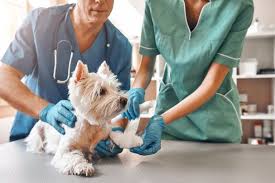1. **Emergency Kit:** Prepare a pet emergency kit that includes essentials such as food, water, medications, medical records, first aid supplies, and familiar items like toys or blankets.
2. **Identification:** Ensure your dog has proper identification, including a collar with an ID tag containing your contact information. Consider microchipping for an additional layer of identification.
Read also: How to manage deafness in dogs
3. **Emergency Contacts:** Maintain a list of emergency contacts, including your veterinarian’s number and an emergency animal hospital. Also, include a contact who can care for your pet if you’re unavailable.
 Learn More
Learn More4. **Evacuation Plan:** Have a clear evacuation plan in case of disasters. Identify pet-friendly shelters or hotels, and practice evacuating with your dog to reduce stress during actual emergencies.
5. **Training:** Train your dog to respond to basic commands like “come” and “stay.” This helps in managing situations and keeps your pet under control during emergencies.
6. **Pet-Safe Areas:** Identify safe areas within your home where you can confine your dog in case of emergencies. This is especially important during events like natural disasters.
7. **Emergency Numbers:** Keep a list of poison control and emergency veterinary numbers accessible. Immediate action can be crucial in case your pet ingests something harmful.
8. **First Aid Knowledge:** Learn basic pet first aid techniques. Understand how to handle common injuries, and keep a first aid manual specific to pets in your emergency kit.
9. **Regular Checkups:** Schedule regular veterinary checkups to ensure your pet is in good health. Early detection of issues can prevent emergencies or provide timely intervention.
10. **Temperature Control:** Be mindful of extreme temperatures. During hot weather, avoid walks during peak heat, and provide adequate shade and water. In cold weather, protect your dog from low temperatures.
Read also: 7 basics of wound management in dogs
11. **Secure Environment:** Create a secure environment at home, ensuring that your dog cannot access potentially harmful items or escape easily. This is crucial for preventing accidents.
12. **Communication with Family:** Ensure that all family members are aware of the emergency plan and know how to care for the pet. Clear communication can prevent confusion during high-stress situations.
🧩CREATED BY DR JOSEPH DEJI-FOLUTILE
For more information and updates join our WhatsApp group HERE
Like our page on Facebook HERE













![The 17 Habits Of Truly Wealthy People That you can easily adopt now [Real powerful stuff]](https://worldfamilydigest.com/wp-content/uploads/2022/02/FA033A84-800B-424D-8DEA-2BB8AD9E91F6-100x70.jpeg)

